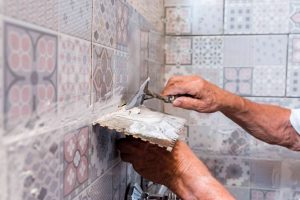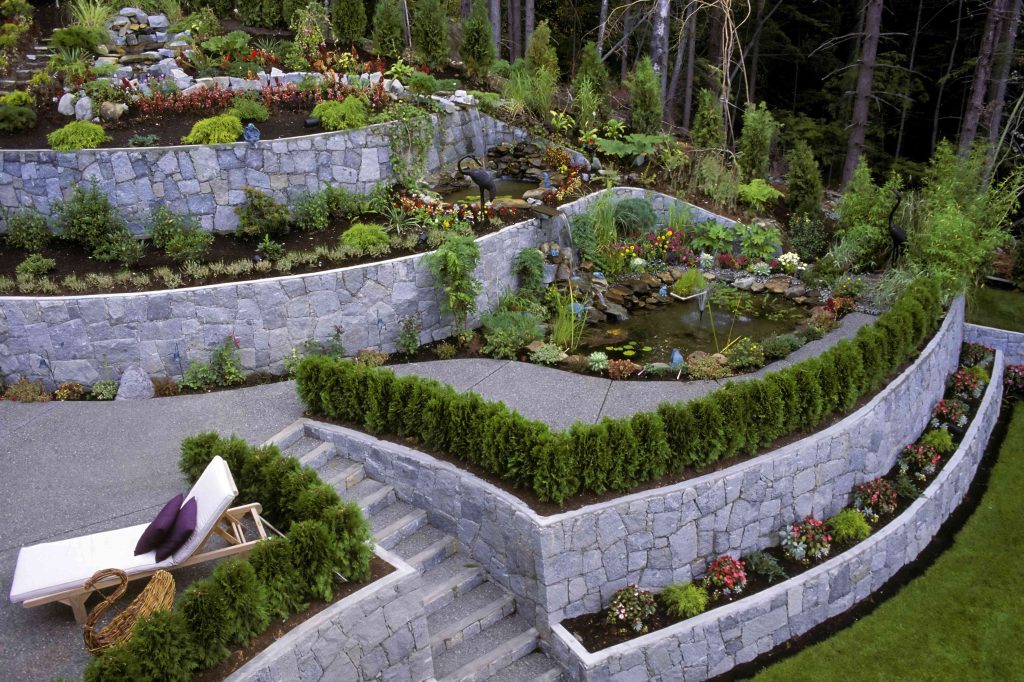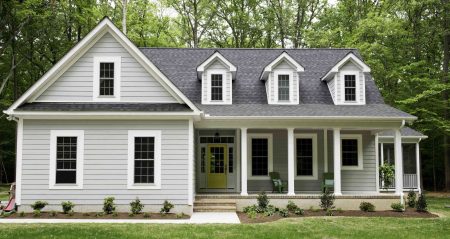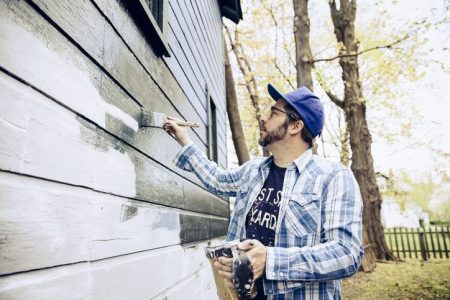Retaining walls control erosion and drainage problems, and they add usable space for gardens, patios, or detached living units. On average, a retaining wall costs about $4,800.
Meet the Expert
Joe Raboine is Vice President of Design at Belgard, a provider of retaining wall products.
Average Cost
| Average cost | $40 per square foot |
| Low cost | $20 per square foot |
| High cost | $60 per square foot |
Retaining walls cost from $20 to $60 per square foot, but there are variables, says Joe Raboine, vice president of design at Belgard, a provider of retaining wall products.
“It depends on the overall height, soil type, water drainage, and the materials being retained, and generally average in the $40 per square foot range,” Raboine says.
Retaining Wall Cost Per Square Foot
Retaining walls vary in length and height, so calculating the cost by area (length x height) helps you arrive at an accurate cost.
A small retaining wall built with basic concrete blocks generally costs about $1,200 for a 10-foot-long, 3-foot-high wall.
Small retaining walls that remain 3 feet high cost up to $7,200 for a 40-foot-long retaining wall constructed with premium blocks.
Small retaining walls are typically built in gardens, backyards, and near driveways to create garden or flower beds and to smooth out slopes.
| Length (Linear) | Average | Low | High |
| 10 feet | $1,200 | $600 | $1,800 |
| 15 feet | $1,800 | $900 | $2,700 |
| 20 feet | $2,400 | $1,200 | $3,600 |
| 25 feet | $3,000 | $1,500 | $4,500 |
| 30 feet | $3,600 | $1,800 | $5,400 |
| 35 feet | $4,200 | $2,100 | $6,300 |
| 40 feet | $4,800 | $2,400 | $7,200 |
| 45 feet | $5,400 | $2,700 | $8,100 |
| 50 feet | $6,000 | $3,000 | $9,000 |
| 55 feet | $6,600 | $3,300 | $9,900 |
| 60 feet | $7,200 | $3,600 | $10,800 |
The average linear cost of a 3-foot-high retaining wall at $40 per square foot (average), $20 per square foot (low); and $60 per square foot (high)
Retaining Wall Benefits
Retaining walls balance functional and aesthetic benefits by:
- Controlling erosion: Retaining walls correct sharp slopes that cause erosion.
- Leveling the yard: They level out slopes and dips in a yard for an improved appearance.
- Improving usability: By adding more level space to a yard, retaining walls provide more room for sheds, gardens, patios, and tiny homes.
- Managing drainage: Drainage systems are typically built behind retaining walls to relieve drainage issues.
Retaining Wall Cost by Material
The type of material you choose for the retaining wall affects its cost, with wood being the least expensive and natural stone and metal being the most expensive.
Concrete Block
Concrete block retaining walls cost an average of $40 per square foot. Concrete block is a popular type of material for retaining walls due to its durability and flexibility.
Concrete blocks range from basic 12-inch by 6-inch units ($4 to $7 per unit) to more expensive premium blocks that add value to the property.
“If your wall faces the street or is part of an overall outdoor living space, there are many premium retaining wall options,” Raboine says, although they will cost more.
Wood
Wood retaining walls cost $23 per square foot—about half the cost of other retaining wall materials.
Wood retaining walls are simple for experienced DIYers to build. However, wood is an organic material, so it will eventually begin to decompose—even if it’s built with pressure-treated wood.
Natural Stone
Natural stone retaining walls cost $56 per square foot.
The lowest-cost stone retaining wall is a gabion wall, one that is constructed of metal mesh filled with large stones. Stacked natural stone retaining walls are generally more attractive than gabion walls since they blend in with the yard.
Metal
Metal retaining walls cost $63 per square foot and are built from I-beams and corrugated or flat sheets of galvanized steel.
| Material Type | Cost Per Square Foot |
| Concrete block | $40 |
| Wood | $23 |
| Natural stone | $56 |
| Metal | $63 |
Main Cost Factors
The main cost drivers for a retaining wall are the wall’s size, type of materials, slope height and angle, location, and drainage issues.
Size
The size of the wall—both length and height—determines its overall cost. Due to safety and permitting issues, walls over 3 feet high are far more expensive to build than shorter walls.
Materials
While wood is inexpensive and metal and natural stone are very expensive, many homeowners choose a middle option: concrete retaining wall blocks.
Concrete blocks don’t decompose and they aren’t easily damaged or cracked. For visible areas, more expensive textured concrete blocks can be used.
Slope
Sloping or grading the yard costs from $900 to $4,350, and leveling the yard costs from $700 to $4,100 per project.
You may need to level or slope the yard either before or after building the retaining wall. Dirt can often be shifted around the yard.
However, large voids require you to purchase fill dirt and have it placed on your property. A yard of dirt costs $5 to $15 (a yard is one cubic yard).
Location
The retaining wall’s location and accessibility affect its cost. Walls on the front of the property are easier to access than those in the back.
Walls built in the back of the property mean that heavy materials must be hauled farther.
In addition, fences may need to be removed and rebuilt to allow access to the back.
Drainage
Installing a French drain costs from $10 to $50 per linear foot, or around $5,000 for the entire project.
Though a retaining wall has gravel backfill for drainage, you may need to install a supplemental French drain behind the retaining wall to catch and direct groundwater away from it.
Additional Cost Factors
Remove Trees
Tree removal costs $875 per tree. Removing the tree leaves behind the stump and root system, and these may need to be removed to make way for the retaining wall.
Tree stump grinding costs about $300 per stump, with large stumps costing as much as $425.
Landscape or Repair the Yard
Building a retaining wall will damage some of the yard. Some of the ground above the wall may be affected. A significant amount of ground below the wall will be removed. Also, the yard may be damaged by earthmoving equipment.
- Landscaping: Landscaping costs $2,600 on the low end to fix areas of the yard damaged by building the wall. You may pay as much as $14,000 to landscape the entire yard.
- Hydroseeding: Hydroseeding is a fast way to re-establish lawn removed or damaged by building the retaining wall. A liquid mixture of seed, fertilizer, mulch, and water is sprayed on the yard. Hydroseeding costs $0.10 to $0.22 per square foot.
- Planting grass: Damaged or removed grass can be replanted by aerating and re-seeding the dirt. Core lawn aeration costs from $85 to $270 per lawn. Planting grass seed costs from $400 to $1,500 for every 10,000 square feet.
- Top soil: Top soil costs from $340 to $1,250 per load, delivered and dropped on your property.
Build a Patio
A patio is a common replacement for ground removed below the retaining wall.
A patio costs from $1 to $3 per square foot for a simple gravel patio, on up to $50 per square foot for a natural stone patio made of flagstone. It costs $10 to $25 per square foot to build a patio with concrete pavers.
Benches and Planters
For areas like patios adjacent to an outdoor living area, Raboine says, it’s possible to add useful spaces within the retaining wall.
“Features such as built-in seating, raised garden beds, planters, retaining wall steps, and sitting areas can be incorporated into a retaining wall project,” he says. “These spaces extend the useable space and often don’t add significantly to the overall cost.”
DIY vs. Professional Costs
A do-it-yourself working in favorable weather and with an assistant or two can built a small garden retaining wall in a couple of weekends.
Installing a concrete block retaining wall costs around $1,500 for a 10-foot-long wall. It costs $16 to $32 per linear foot to build a solid wood retaining wall when you do it yourself.
“Walls under three feet can be completed as a DIY project,” Raboine says. “The general idea is simple, but homeowners should be prepared, as there will be a lot of excavation and materials being moved. Small equipment can be rented to assist with the movement of materials.”
Cost to Repair a Retaining Wall
It costs $100 to $200 to repair a retaining wall when you do it by yourself.
Retaining walls may collapse over time due to pressure from water-logged earth behind the wall. Concrete blocks are very durable and likely can be reused.
How to Save on the Cost of a Retaining Wall
There are plenty of ways to save on the cost of building a retaining wall. For one, smaller blocks, while easier to handle, are the most expensive. Raboine says that larger blocks cost less than smaller blocks, on a square foot by square foot basis.
“If the wall is purely functional, you can save money by opting for larger, less ornate blocks,” he says. “There are large, commercial-style blocks that can also be used, which is typically more cost-effective.”
Raboine also advises keeping walls shorter, if possible: “Walls under three feet are typically less expensive, as they don’t normally require geogrid soil mesh.”
- Build the retaining wall by yourself, if possible.
- Keep the wall at 3 feet high or lower.
- Use larger concrete blocks.
- Build the wall with wood instead of concrete blocks.
- Use a gravel base instead of geogrid soil mesh.
Best Time of Year to Install a Retaining Wall
It’s best to build a retaining wall in a dry season, usually from late spring to early fall. The ground needs to be dry.
Frozen ground in the winter may prevent you from building the retaining wall until the ground thaws.
-
What is the cheapest retaining wall to build?
The cheapest retaining wall you can build is a wood retaining wall, at around $23 per square foot. Wood retaining walls are simple for DIYers to build on their own.
-
Why are retaining walls so expensive?
Retaining walls are expensive because many concrete blocks are required, and blocks are heavy and expensive to deliver. A 25-foot-long by 3-foot-high retaining wall requires about 260 blocks. Not only that, but retaining walls over 3 feet high are more complicated to construct and must be permitted and built by professionals.
-
Is a retaining wall worth it?
A retaining wall is worth it especially if erosion or drainage problems threaten primary or secondary structures on the property. The retaining wall will likely cost less than repairing the home, outbuilding, or detached living unit.
Read the full article here














